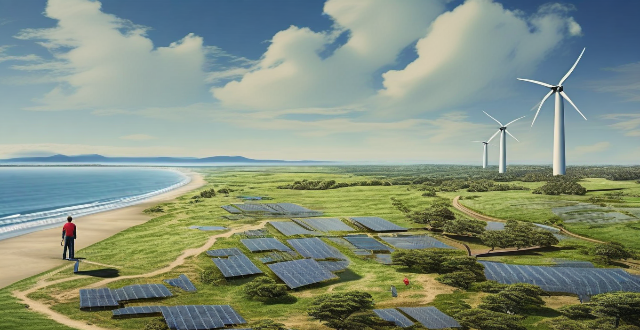Climate change poses significant risks to the energy sector, affecting both production and distribution. These risks include reduced power plant efficiency due to higher temperatures, changes in energy demand patterns, disruptions to infrastructure from sea level rise and extreme weather events, shifts in preferred energy sources, the need for adaptation and resilience efforts, and potential regulatory and policy changes aimed at reducing emissions and promoting renewables. Addressing these challenges requires a comprehensive strategy that encompasses both adaptation and mitigation measures to ensure a sustainable and resilient energy future.

The Impact of Climate Change on Energy Production and Distribution
Climate-related risks, such as sea level rise and temperature increase, pose significant challenges to the energy sector. These risks can affect energy production and distribution in various ways, including:
1. Reduced Efficiency of Power Plants
- *Cooling Systems*: Power plants require large amounts of water for cooling purposes. As temperatures rise, the efficiency of these systems may decrease, leading to reduced power generation capacity.
- *Maintenance Costs*: Higher temperatures can also accelerate wear and tear on equipment, increasing maintenance costs and potentially leading to more frequent shutdowns.
2. Changes in Energy Demand
- *Heating and Cooling Needs*: Rising temperatures can alter the demand for heating and cooling, which may impact the overall energy consumption patterns.
- *Peak Loads*: Extreme weather events, such as heatwaves or cold snaps, can cause sudden spikes in energy demand, straining the grid's capacity.
3. Disruptions to Energy Infrastructure
- *Sea Level Rise*: Coastal power plants and transmission lines are vulnerable to flooding and storm surges associated with sea level rise. This can lead to damage or destruction of critical infrastructure, disrupting energy supply.
- *Extreme Weather Events*: Hurricanes, floods, and other extreme weather events can cause widespread damage to energy infrastructure, resulting in prolonged outages and repair costs.
4. Shifts in Energy Sources
- *Renewable Energy*: As climate change intensifies, there may be a greater emphasis on developing renewable energy sources that are less affected by climate-related risks.
- *Geographical Considerations*: Some regions may become more favorable for certain types of energy production due to changing climate conditions, while others may become less viable.
5. Adaptation and Resilience Efforts
- *Upgrading Infrastructure*: To combat the effects of climate change, energy providers may need to invest in upgrading their infrastructure to make it more resilient against extreme weather events.
- *Diversifying Energy Mix*: A diverse energy mix that includes a combination of traditional and renewable sources can help mitigate the risks associated with any single source being affected by climate change.
6. Regulatory and Policy Changes
- *Emissions Standards*: Governments may implement stricter emissions standards for power plants and other industrial facilities to reduce their contribution to climate change.
- *Incentives for Renewables*: Policies promoting renewable energy development can help offset the potential decline in traditional energy sources affected by climate-related risks.
In conclusion, climate-related risks have far-reaching implications for the energy sector. Addressing these challenges will require a multifaceted approach that involves both adaptation measures and efforts to mitigate the underlying causes of climate change. By taking proactive steps now, we can help ensure a more resilient and sustainable energy future.